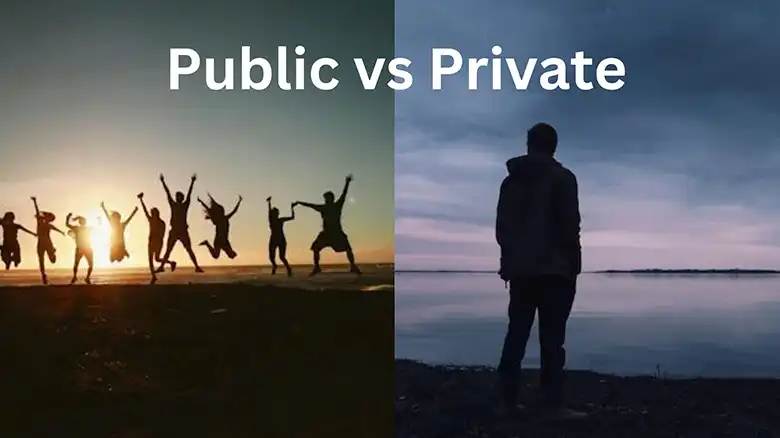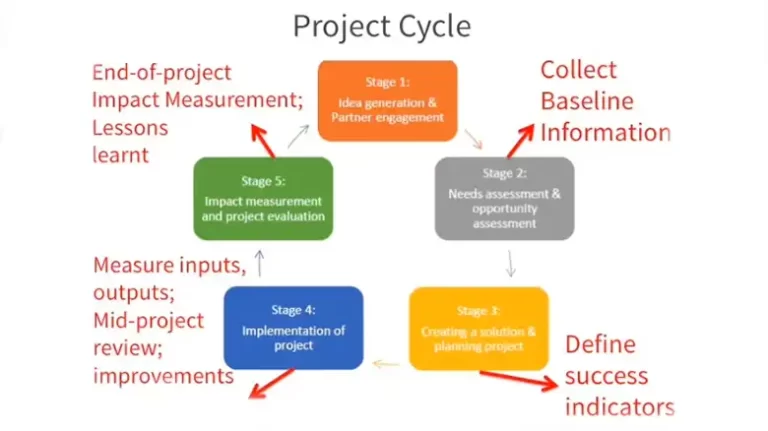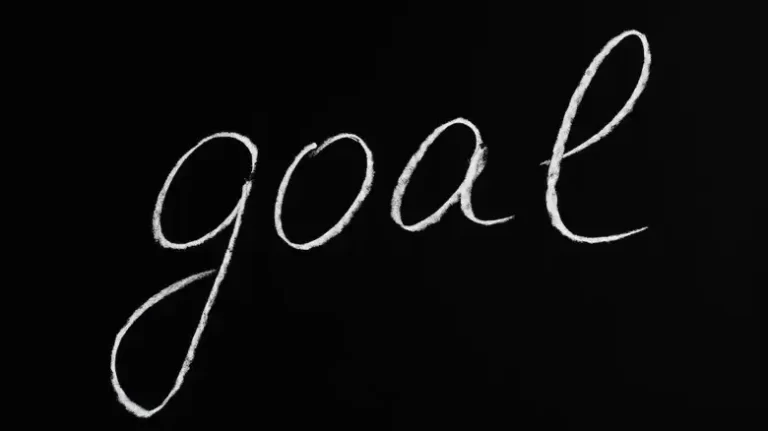Public vs Private Self
In a world where identity is both curated and concealed, understanding the nuances of the public and private self becomes paramount. This article delves into the intricacies of this dichotomy, exploring the psychological, cultural, and technological dimensions that shape our identity.

Unveiling the Public Self
The public self takes center stage, laying bare the aspects of our lives we choose to share with the world. Let’s explore the layers of unveiling the public self, understanding the deliberate curation of the persona we present to others.
Crafting an Online Persona
In the digital realm, our public self often finds expression through social media platforms. From the carefully chosen profile picture to the captions that accompany our posts, each element contributes to the construction of an online persona.
Crafting this digital identity involves not just showcasing moments but creating a narrative that aligns with how we wish to be perceived by others.
From a well-curated LinkedIn profile detailing professional achievements to a vibrant Instagram feed capturing snippets of our personal life, the online persona serves as a digital business card, a glimpse into who we are or aspire to be. The challenge lies in striking a balance between authenticity and the desire for positive perception.
Professional Identity and Workplace Persona
Beyond the digital landscape, the workplace becomes a stage for the public self. Each meeting, presentation, and interaction contributes to the ongoing narrative of our professional identity.
The workplace persona is a carefully cultivated image, blending competence with approachability, authority with relatability.
The delicate art lies in navigating professional expectations without sacrificing individuality. Striking this balance ensures that the public self aligns with the values of the organization while maintaining a genuine expression of personal strengths and skills.
Conforming to Societal Norms
In the broader context of society, our public self is influenced by cultural expectations and societal norms. The clothes we wear, the opinions we express, and the way we navigate public spaces are all influenced by a complex web of societal expectations.
It’s a nuanced interplay between fitting in and standing out, adhering to conventions while preserving a sense of individuality.
This section delves into the conscious and subconscious ways individuals conform to societal norms, exploring how these influences shape the public self. The goal is not conformity for the sake of it but a thoughtful navigation that acknowledges societal expectations while embracing the authenticity of personal expression.
The Intimate Private Self
In the realm of self-discovery, the “Intimate Private Self” is the sanctuary where authenticity thrives away from the public eye. This segment of our identity, often shielded from societal scrutiny, encompasses the intricacies that make us unique individuals.
Understanding the private self involves delving into the emotional nuances that shape our thoughts and actions. It’s the part of us that exists beyond the curated images and carefully crafted personas presented to the world. Let’s unravel the layers of the intimate private self.
The Sanctuary of Solitude
At its core, the intimate private self finds solace in solitude. It’s the space where we can truly be ourselves, free from external expectations and judgments. This solitude may manifest in quiet moments of reflection, personal hobbies, or simply in the sanctuary of our thoughts.
In these private moments, we confront our true feelings, aspirations, and fears. It’s where the unfiltered version of ourselves emerges, untethered from the need to conform to external standards.
Understanding the significance of this solitary sanctuary is pivotal to comprehending the essence of the private self.
Emotional Landscape
Emotions, the threads that weave the tapestry of our private self, are often too complex for public display. In the intimate private realm, we grapple with a spectrum of feelings – joy, sorrow, vulnerability, and strength. These emotions become the brushstrokes that paint the canvas of our authentic selves.
Navigating the emotional landscape of the private self involves acknowledging and embracing these feelings without the need for external validation. It’s a deeply personal journey, marked by self-acceptance and a profound understanding of what truly moves us.
Relationships and Authentic Connections
The private self extends its roots into the realm of relationships. In personal connections, we unveil layers of vulnerability that remain hidden in the public sphere. Authenticity becomes the cornerstone of these relationships, allowing us to share our true selves with those we trust.
Whether in romantic relationships, friendships, or familial bonds, the private self seeks connections that go beyond societal expectations. These connections are built on mutual understanding, acceptance, and the freedom to express our genuine thoughts and feelings.
The Role of Personal Passions
Our private self often finds expression in the pursuits that bring us joy and fulfillment. Hobbies, passions, and personal interests become the playgrounds where we can explore, create, and be unapologetically ourselves.
Whether it’s painting, writing, or indulging in a favorite sport, these activities shape and define the private self.
Recognizing the importance of personal passions in our lives allows us to nurture the aspects of ourselves that may not be evident in the public domain. It’s a reminder that beyond the roles we play in society, there lies a canvas waiting to be painted with the colors of our authentic interests.
Striking the Balance
While the private self offers a haven for authenticity, it also requires a delicate balance. Navigating the boundary between the public and private self involves a nuanced approach. It’s about selectively sharing aspects of our intimate selves while safeguarding the core elements that make us who we are.
This balance is not about creating a dichotomy but rather integrating both aspects harmoniously. It’s an acknowledgment that our public and private selves are interconnected, each influencing the other in a dance of self-discovery.
Navigating the Boundary
Navigating the boundary between our public and private selves is akin to traversing a delicate tightrope. It’s a nuanced journey where we constantly weigh what to reveal and what to keep guarded.
In the realm of identity, the boundary between the public and private self is where the intricacies of our persona unfold. It’s a space where personal authenticity meets societal expectations, and understanding how to navigate this space is crucial for a harmonious existence.
The Art of Self-disclosure
At the heart of this navigation is the art of self-disclosure. It involves the conscious decision of what to share with the public and what to reserve for our private realm.
Striking this balance requires thoughtful consideration, recognizing that transparency can build connections, but oversharing might compromise the sanctity of our intimate selves.
In our digital age, where personal details are often laid bare on social media, mastering the art of self-disclosure becomes paramount. It’s about sharing selectively, understanding the power of vulnerability without sacrificing the core of who we are.
Coping with Public Scrutiny
As we traverse this boundary, we inevitably encounter public scrutiny. Opinions, judgments, and criticisms become part of the landscape. Coping with this external evaluation without allowing it to erode our private well-being is a skill worth cultivating.
This section delves into strategies for managing public scrutiny, offering insights into developing resilience and maintaining a strong sense of self in the face of external judgment. It’s a reminder that, in the journey of self-discovery, external opinions should be guides, not dictators.
Navigating the boundary is not a one-size-fits-all endeavor. Each individual must find their rhythm, understanding that the art lies in adapting to different contexts while remaining true to the essence of who they are.
The Impact of Technology
In the ever-evolving landscape of identity, the role of technology cannot be understated. The impact of technological advancements on the public and private self is profound, influencing how we perceive ourselves and how others perceive us.
Shaping Identity in the Digital Footprint
Technology has become an indelible part of our lives, leaving a significant imprint on our identities. Every click, post, and interaction contributes to our digital footprint, a trail of data that reflects aspects of our public and private selves.
The challenge lies in understanding the implications of this digital trail on our overall identity.
In a world where online presence often serves as a first impression, individuals must be cognizant of the information they share. From social media activities to online searches, our digital footprint contributes to the construction of our public self, sometimes influencing perceptions beyond our control.
Safeguarding the Private Self Online
As we embrace the conveniences of the digital age, safeguarding the private self becomes paramount. The internet, while a powerful tool for connectivity and self-expression, also poses risks to personal privacy.
Cybersecurity concerns, data breaches, and the potential misuse of personal information underscore the importance of vigilance in protecting our private selves.
Individuals must adopt measures to secure their online presence, including robust privacy settings, secure passwords, and awareness of potential online threats.
Balancing the desire for digital connectedness with the need for privacy is a delicate act, requiring a strategic approach to navigate the digital realm without compromising personal boundaries.
Navigating the Dichotomy
The impact of technology extends beyond the binary of public and private self. It blurs the lines between the two, creating a dynamic interplay that individuals must navigate.
The challenge lies in finding harmony between our online and offline personas, recognizing that the digital self is an extension rather than a replacement of the private self.
Technological tools, from social media platforms to communication apps, offer avenues for self-expression and connection.
However, individuals must approach these tools with intentionality, understanding the potential consequences of digital interactions on their holistic identity. Striking a balance between online and offline authenticity is essential for a cohesive sense of self in the digital age.
The Future of Identity in a Digital Era
As technology continues to advance, the future of identity will be shaped by the evolution of digital tools and platforms. From virtual reality to artificial intelligence, the boundaries between public and private self may become even more nuanced.
Anticipating these changes and proactively engaging with technology will be crucial for individuals seeking to navigate the digital terrain while preserving the integrity of their identity.
Psychological Perspectives
Understanding the intricate dance between our public and private selves involves delving into the psychological perspectives that shape our identities.
Unraveling Freudian Notions
Let’s start with Sigmund Freud’s influential theories on personality. According to Freud, the mind comprises three parts: the id, ego, and superego. The public self, influenced by societal norms, often aligns with the superego, representing our internalized moral compass.
On the flip side, the private self, more hidden and instinct-driven, aligns with the id. Exploring these Freudian notions unveils the unconscious forces at play in shaping our public and private personas.
Jungian Archetypes and the Collective Unconscious
Moving beyond Freud, Carl Jung introduced the concept of archetypes and the collective unconscious. Archetypes, universal symbols embedded in our psyche, contribute to the formation of both our public and private selves.
Understanding these archetypes provides insight into the common threads that weave through human identity, influencing how we present ourselves to the world and how we perceive our innermost selves.
Self-Perception Theory: Mirror, Mirror on the Wall
Shifting gears, let’s explore the self-perception theory, a psychological perspective that suggests we learn about ourselves by observing our own behavior. Applied to the public and private self, this theory emphasizes that we form our identities by analyzing our actions in various contexts.
In simpler terms, we are mirrors to our own personas, and understanding this reflection is key to comprehending the dynamics between our public and private worlds.
Cognitive Dissonance and Identity Alignment
Cognitive dissonance theory, proposed by Leon Festinger, sheds light on the discomfort that arises when our beliefs and actions don’t align.
Translating this to the public and private self, we grapple with dissonance when our external image contradicts our internal values. Exploring how individuals navigate this dissonance provides valuable insights into the conscious and subconscious processes that mold our identities.
The Role of Attachment Styles
In the realm of psychology, attachment styles play a pivotal role in shaping how we connect with others. From a psychological perspective, understanding our attachment style provides a lens through which we can examine the roots of our public and private behaviors.
Whether secure, anxious, or avoidant, our attachment styles influence how we form relationships, impacting both our public and private personas.
Trauma and Identity Reconstruction
For many, trauma acts as a transformative force in identity construction. From a psychological standpoint, exploring how individuals navigate and reconstruct their identities after trauma provides a profound understanding of the resilience inherent in the human psyche.
Trauma’s impact on the public and private self illustrates the intricate ways our minds adapt and evolve in response to life’s challenges.
Gender and Identity
In the complex tapestry of human identity, the interplay between gender and the self is a significant thread. This section delves into the ways in which gender influences and shapes the public and private aspects of our lives.
Understanding Gender Roles in Public and Private Spheres
Gender roles have long been ingrained in societal expectations, influencing how individuals present themselves both publicly and privately. In the public sphere, these roles often dictate behaviors, career choices, and social interactions.
In contrast, the private realm becomes a space where individuals may either conform to or challenge these traditional expectations, allowing for a more authentic expression of self.
From the way we dress to the careers we choose, societal norms surrounding gender play a pivotal role in constructing our public identity. It’s not just about conforming; it’s about navigating a complex web of expectations while maintaining a sense of individuality.
The Intersectionality of Identity
Identity is not a monolithic experience; it’s a mosaic of various aspects, and gender is a crucial piece. When exploring the intersectionality of gender and identity, it’s essential to recognize that individuals don’t exist within a single identity category.
Gender intersects with factors such as race, ethnicity, sexual orientation, and socioeconomic status, creating a unique and multifaceted experience for each person.
Understanding and respecting the intersectionality of identity is vital in acknowledging the diverse challenges and triumphs faced by individuals. It’s not just about being a man or a woman; it’s about navigating the intricate layers of identity that make each person’s experience unique.
Challenges Faced by Those with Multiple Marginalized Identities
For some individuals, the intersectionality of gender and other marginalized identities adds an extra layer of complexity to their public and private selves.
Whether it’s being a woman of color, a member of the LGBTQ+ community, or someone with a disability, these individuals navigate a landscape where societal expectations may intersect and sometimes clash.
This section sheds light on the challenges faced by those with multiple marginalized identities. It emphasizes the importance of creating inclusive spaces that acknowledge and respect the richness of diverse experiences.
By understanding these challenges, we can work towards fostering environments that allow individuals to express their public and private selves authentically.
Embracing Evolving Notions of Gender Identity
In recent years, societal norms surrounding gender identity have undergone significant evolution. Beyond the binary concept of male and female, individuals are increasingly embracing a spectrum of gender identities.
Exploring the evolving landscape of gender identity provides insight into how individuals navigate their public and private selves in a world that is gradually becoming more inclusive.
It’s about acknowledging and respecting the diverse ways in which people identify and express their gender, both publicly and privately.
Cultural Variances
In the intricate dance of self-discovery, cultural variances play a significant role in shaping our public and private selves. This section explores how diverse cultural backgrounds influence the way individuals perceive and express their identity.
Embracing Diversity in Identity Formation
Cultural variances introduce a rich tapestry of influences, from traditions and values to societal expectations. This diversity adds layers to the construction of our public and private selves, highlighting the dynamic interplay between individual expression and collective cultural identity.
The Role of Traditions in Identity
Traditions serve as a compass, guiding individuals through the landscape of identity. This part of the exploration delves into how cultural traditions contribute to the formation of public personas and the cultivation of private selves.
Whether rooted in rituals or passed down through generations, traditions shape the very fabric of who we are.
Societal Expectations Across Cultures
Cultural norms dictate not only how individuals interact with the world but also how they navigate the delicate balance between the public and private self.
This aspect examines the influence of societal expectations on shaping identity, emphasizing the importance of understanding and respecting diverse cultural perspectives.
Individualism and Collectivism Striking a Balance
Different cultures prioritize individualism and collectivism to varying degrees. This part of the discussion sheds light on how individuals from diverse cultural backgrounds navigate the tension between expressing their unique identities and adhering to communal expectations.
Impact on Communication Styles
Cultural variances extend beyond rituals and traditions into the realm of communication. From verbal expressions to non-verbal cues, this section explores how diverse cultural backgrounds shape the way individuals communicate their public and private selves.
Navigating Identity in a Globalized World
In today’s interconnected world, individuals often find themselves straddling multiple cultural influences. This exploration discusses the challenges and opportunities presented by globalization.
How do individuals reconcile their cultural roots with the demands of a globalized society, and how does this dynamic impact the construction of their public and private selves?
Related Questions
Q1: How do cultural variances impact the construction of the public and private self?
A1: Cultural variances play a pivotal role in shaping both our public and private selves. They influence traditions, societal expectations, and communication styles, adding layers to our identity formation.
Q2: Can individuals from different cultural backgrounds have similar public and private selves?
A2: While there may be commonalities in human experiences, the expression of the public and private self can vary significantly across cultures. Cultural influences shape behaviors, values, and perceptions, contributing to unique identities.
Q3: How do traditions contribute to the formation of the public and private self?
A3: Traditions act as guiding principles, influencing how individuals express their identity publicly and privately. Whether through rituals or cultural practices, traditions become integral to the narrative of who we are.
Q4: Do societal expectations differ based on cultural backgrounds?
A4: Yes, societal expectations vary across cultures, impacting how individuals navigate the balance between their public and private selves. Understanding these cultural norms is essential for appreciating the diversity in identity expression.
Q5: Is there a universal challenge in balancing individualism and collectivism?
A5: Yes, finding the right balance between individual expression and collective expectations is a common challenge faced by individuals from various cultural backgrounds. Striking this balance is integral to a harmonious identity formation process.
Q6: How does globalization impact the cultural variances in the public vs private self?
A6: Globalization introduces individuals to diverse cultural influences. Navigating identity in a globalized world requires reconciling cultural roots with the demands of an interconnected society, shaping the public and private self in unique ways.
Q7: Can communication styles be influenced by cultural variances in identity?
A7: Absolutely. Communication styles are deeply influenced by cultural backgrounds. Verbal and non-verbal cues, as well as the emphasis on directness or indirectness, contribute to the diverse ways individuals express their public and private selves.
Q8: Why is understanding cultural variances important in the context of identity?
A8: Understanding cultural variances is crucial for fostering cross-cultural empathy and effective communication. It enriches our perception of identity, promoting a global community that values and respects the diversity of human expression.
Q9: How can individuals reconcile their cultural roots with a globalized society?
A9: Reconciliation involves embracing one’s cultural roots while adapting to the dynamics of a globalized world. It requires navigating the tensions between tradition and modernity, contributing to a unique and evolving identity.
Q10: Can cultural diversity be seen as an asset in the journey of self-discovery?
A10: Absolutely. Cultural diversity adds depth and richness to the ongoing narrative of self-discovery. It allows individuals to appreciate different perspectives, fostering personal growth and a broader understanding of the human experience.
Conclusion
In conclusion, the public and private self exist in a delicate dance, each influencing and shaping the other. Embracing this duality allows individuals to navigate the complexities of identity with authenticity and resilience.
As we continue to evolve in a dynamic world, understanding and honoring both aspects of the self becomes key to a harmonious and fulfilling existence.





